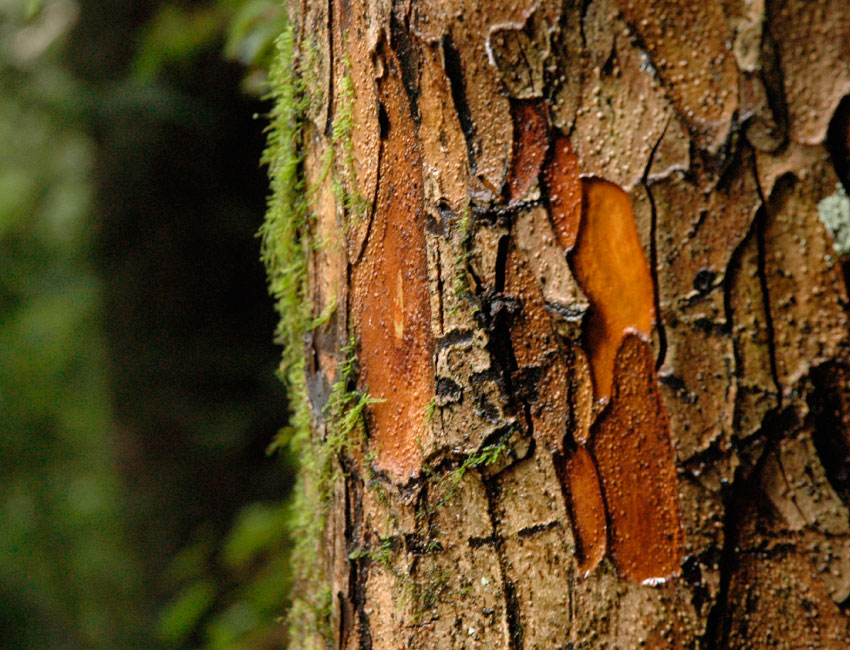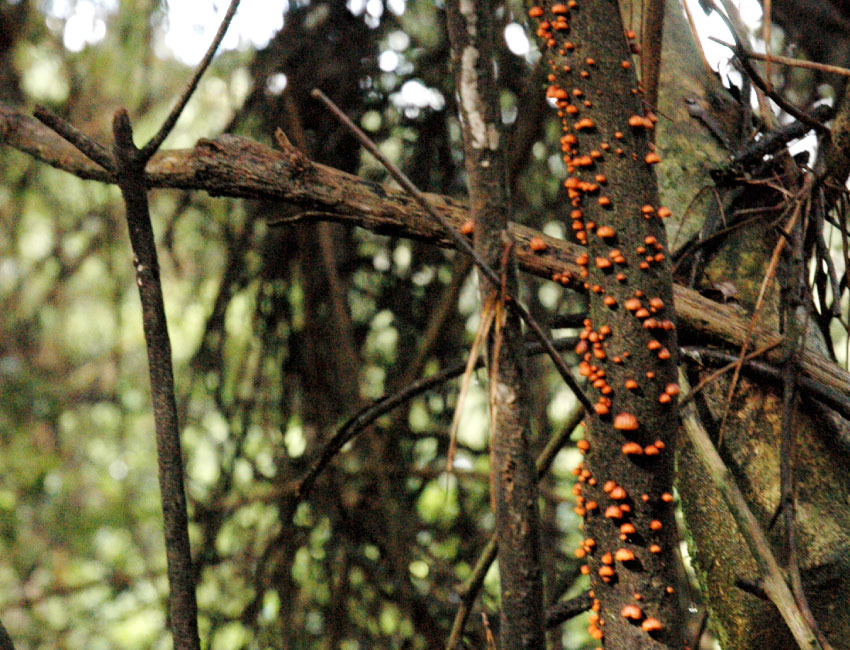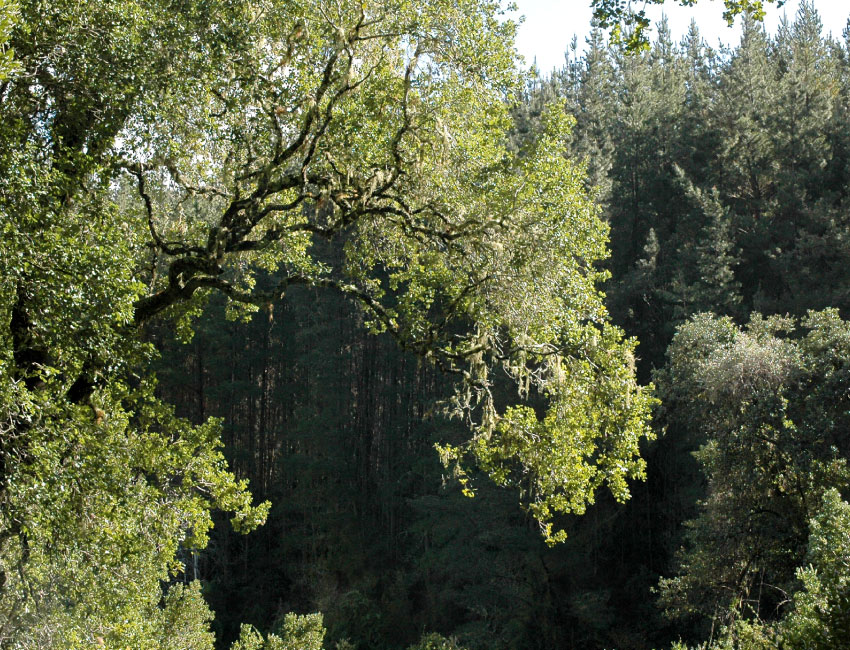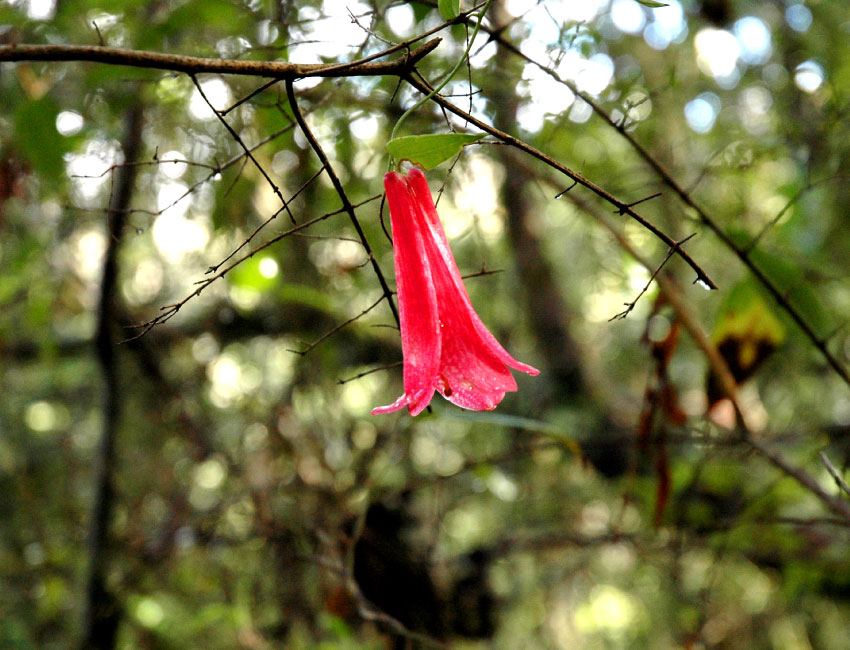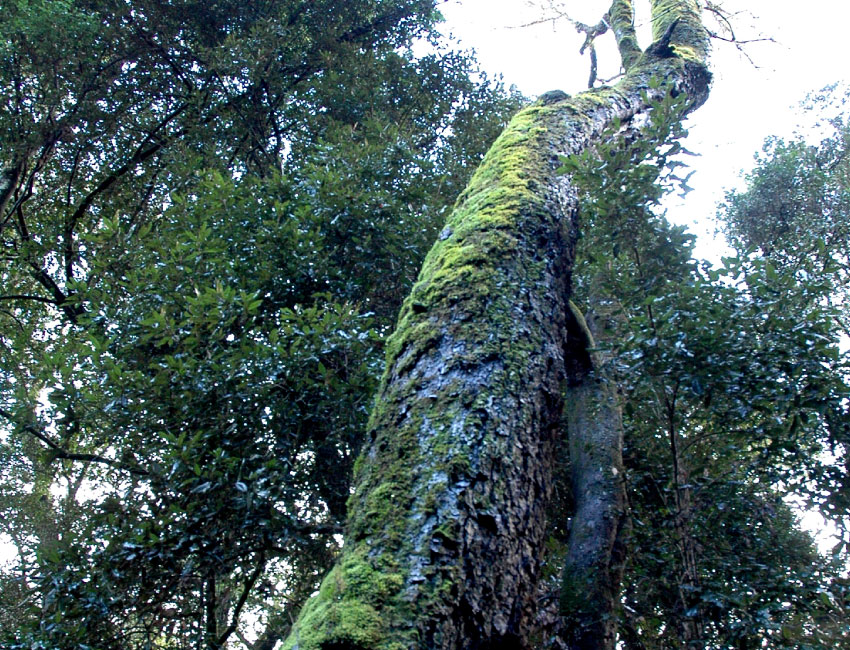En la Región del Bio Bio, Chile, se puede encontrar peumo, lingue, roble y enredaderas.
[:es]Parque Coyanmahuida[:en]Coyanmahuida Park[:]
El Parque Coyanmahuida (en mapudungún Bosque de Robles: Coyán roble y mahuida bosque) se ubica a 38 kilómetros al este de la ciudad de Concepción –capital de la región del Biobío–, y
a 5 kilómetros al oeste de la localidad de Florida, siendo la mayor superficie continua de unas de las últimas áreas con bosque nativo propio de la zona, por eso, se le conoce como el último
relicto de bosque nativo de la zona.
Ahí confluyen árboles, arbustos, el helecho, musgos, el liquen, la liana, el coligüe, hongos, aves, algunos mamíferos en un entorno único donde se respira el aire húmedo en pleno
verano y la neblina en el invierno.
De acuerdo a los registros existentes sobre el parque y estudios exploratorios, en Coyanmahuida alberga a 21 especies de aves, 17 de animales y al menos 34 vegetales. Pero
hay más: en lugar es posible encontrar desde troncos caídos, lianas en forma de culebras y hasta un puente colgante.
Este relicto de bosque nativo comenzó a transformarse en un lugar para conectarse con la naturaleza nativa de Chile. Es un área especial donde la investigación, la recreación y la
docencia se practica en un ambiente de verdad donde los procesos y ciclos son enseñados por primera vez a los alumnos de colegios y universidades, que ven en este lugar a las aves e
insectos como parte de un todo que vive y se transforma y donde el agua modela día a día el sustrato y el viento asegura los procesos de transformación, al hacer caer a los viejos árboles
para dar paso a los que vendrán.


